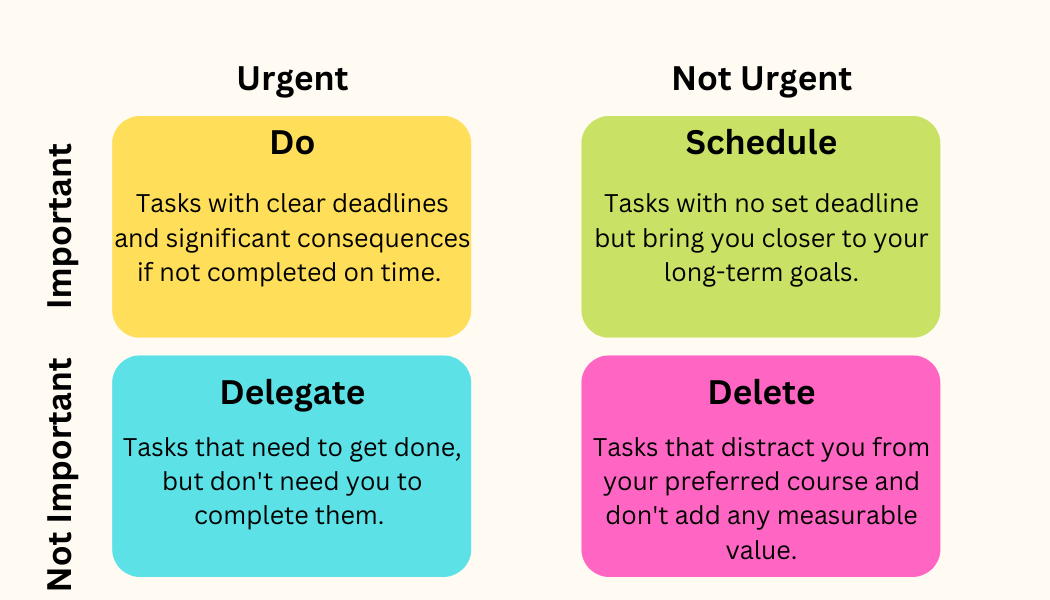Many of us make a to-do list in order to help keep organized and get our work done on time. But, sometimes it’s hard to determine what to work on first, especially when there’s not enough time in the day to get everything done. However, with effective prioritization, it’s easy to increase productivity and ensure the most urgent tasks get completed on time. This is where the Eisenhower Matrix comes in handy.
Also known as The Urgent/Important Matrix, this productivity method was named after Dwright D. Eisenhower, the 34th US president well-known for his organization and high output. It’s said that he organized his obligations so only urgent andimportant matters came across his desk.
The Eisenhower Matrix can be used for both work and home life and is ideal if you:
- Spend a good part of your day running around putting out fires rather than focusing on tasks you want or need to complete
- Are always busy but feel like what you do has little impact
- Are struggling to make progress on your long-term goals
- Find yourself procrastinating
- Find it hard to say No when asked to do something
- Have a hard time delegating
Important Vs Urgent Tasks
The main principle behind the Eisenhower Matrix is being able to distinguish between important and urgent tasks.
Important Tasks
May contribute towards your long-term goals and values. Some might not yield immediate results which make them easy to push them aside. Sometimes, important tasks are also urgent tasks, but often they are not.
Urgent Tasks
These are time-sensitive tasks that demand your attention. Urgent tasks are those you feel obligated to address and complete. Some urgent tasks are also important tasks, but not all of them.
The Eisenhower Matrix
The Eisenhower Matrix is broken down into four parts:
- Important and urgent tasks – Do
- Important but not urgent tasks – Schedule
- Urgent but not important tasks – Delegate
- Not important or urgent tasks – Delete
Urgent and Important
Tasks that have a due date coming up and are critical need your immediate attention. Do them right away. Examples are:
- Finishing a project
- Submitting items
- Responding to some emails or slack messages (make sure they are really urgent and important)
- Picking up a sick child from school
Not Urgent but Important
Tasks that help you achieve your goals, but don’t have a pressing deadline. Schedule them.
It’s important to note that most people spend the majority of their time in this part of the Eisenhower Matrix, but often not enough time as they are unsure what’s important because they are fixed on the most pressing tasks. Examples include:
- Planning your day or week
- Professional development
- Networking
- Working out
Urgent but not Important
These tasks are almost always interruptions throughout your day. Then can be tasks where you’re helping someone else reach their goals. Remember I said that this method can be used in home life too. Whenever possible, delegate these tasks to someone else. Examples include:
- Scheduling
- Responding to some emails or slack messages
- Doing the dishes
- Walking the dog
Not Urgent and not Important
These tasks are not pressing and don’t help you reach your long-term goals. They are pure distractions from the tasks that matter. Delete them. Examples include:
- Watching TV
- Social media
- Snacking on junk food
- Video games
As with the other productivity methods we’ve talked about, this may, or may not work for you. But, it’s super easy to set up and worth a try if you feel you’re not being as productive as you could be. If you give it a try, leave us a comment and let us know how it’s working for you.

